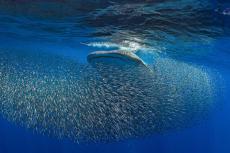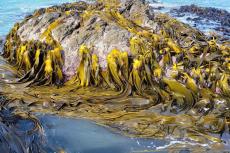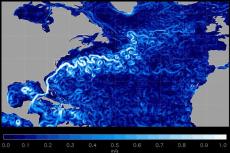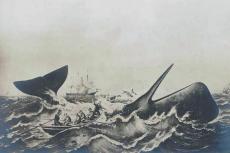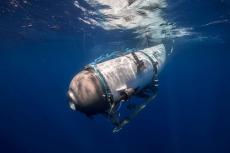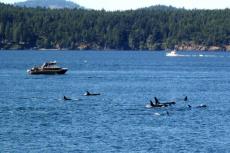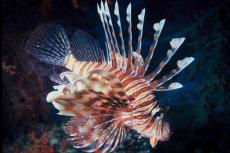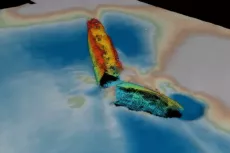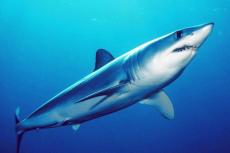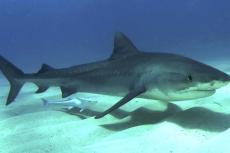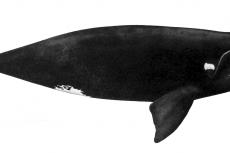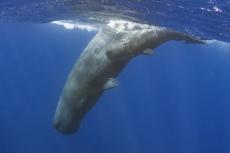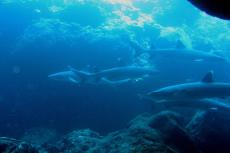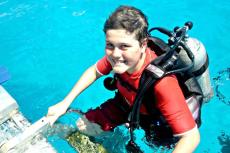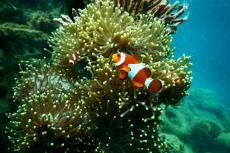Drones Reveal Basking Shark Mating Behaviour
In a groundbreaking study, drones captured novel interactions between three basking sharks in the western North Atlantic. The footage revealed behaviours suggesting pre-copulatory activities between a male and female.
The study describes how the researchers launched a drone from the beach and flew it to the site of a disturbance spotted from shore. Two basking sharks (Cetorhinus maximus) were immediately seen in close proximity—one near the bottom and one near the surface. The latter was confirmed to be a mature male due to the presence of claspers, while the shark near the bottom appeared to be a female.
The pre-copulatory behaviour
For the first ten minutes, the female swam beneath but mostly ahead of the male. The male maintained a position consistently less than one body length from the female, often directly above her, matching her speed and direction. Soon, the female moved to the sea floor, swimming in tight, tortuous circles—a novel behaviour for basking sharks. The male closely pursued her in faster, tighter circles at a distance of less than one body length. They circled at a speed of five to seven rotations per minute, primarily in a clockwise direction, and the diameter of the circle they formed was less than two body lengths.
The male’s snout sometimes touched the female’s back or dorsal fin and he seemed to try to grab her pectoral fin, which is commonly done prior to mating by other species of sharks. The basking sharks' interactions strongly suggested pre-copulatory behaviour and attempted mating.
The male was clearly the pursuer, yet the female did not accelerate away. Her pattern of circling in shallow waters may suggest she was potentially receptive to mating or assessing the male's fitness before copulation which has been seen in other species.
Interrupted
After ten minutes, a third mature basking shark approached the pair, interrupting their interactions. The female accelerated away, while the other two sharks circled each other near the surface at a greater distance than the first pair had done.
Other interpretations
In basking sharks, close-following and echelon swimming behaviours have been documented outside of male-female courtship contexts. However, the speed and vigour of the male’s pursuit of the female in this study suggest that hydrodynamic energy conservation or feeding are unlikely explanations for these behaviours. However, no copulation was observed, and the authors say that they cannot rule out agonistic interactions or other behaviours between males or possibly an immature female. But a male courtship-related pursuit or “following” of a female is the most plausible explanation for the sighting.
These observations are significant as they provide new insights into basking shark behaviour, particularly in a potential pre-copulatory context. The tight circling and close following are behaviours not typically seen in basking sharks, and are suggestive of mating.
The importance of these findings
Among the least observed behaviours in wild shark species is reproduction. While some aspects of shark courtship and mating have been documented, the actual act of copulation remains elusive for most species. Shark mating typically involves a sequence of behaviours: males pursue females, often biting them for stabilization as they attempt to insert their claspers for copulation.
The scarcity of such observations limits our understanding of shark life history, which is crucial given their threatened conservation status due to overfishing, habitat loss, and climate change. Better documentation of shark mating could significantly aid conservation and fisheries management efforts.
A rarely observed species
Basking sharks, the second-largest fish species in the world, are seasonal migrants to temperate coastal waters in the western North Atlantic. Despite their frequent surface swimming and well-documented behaviours, aspects of their reproductive life history remain poorly understood. Previous accounts have described potential courtship behaviours, but actual copulation has never been observed.
The importance of drones
The use of drones for wildlife observation is rapidly increasing. Thanks to advancing technology, greater accessibility, and reduced costs, naturalists and scientists can now unobtrusively monitor terrestrial and marine animals. This innovation allows for the documentation of rare natural phenomena, particularly benefiting the study of marine megafauna like whales, sea turtles, and sharks, as in the present study.
These observations provide valuable insights into basking shark behaviour and mating. The use of drones in such studies highlights their potential to revolutionize wildlife observation and enhance our knowledge of elusive natural phenomena.




